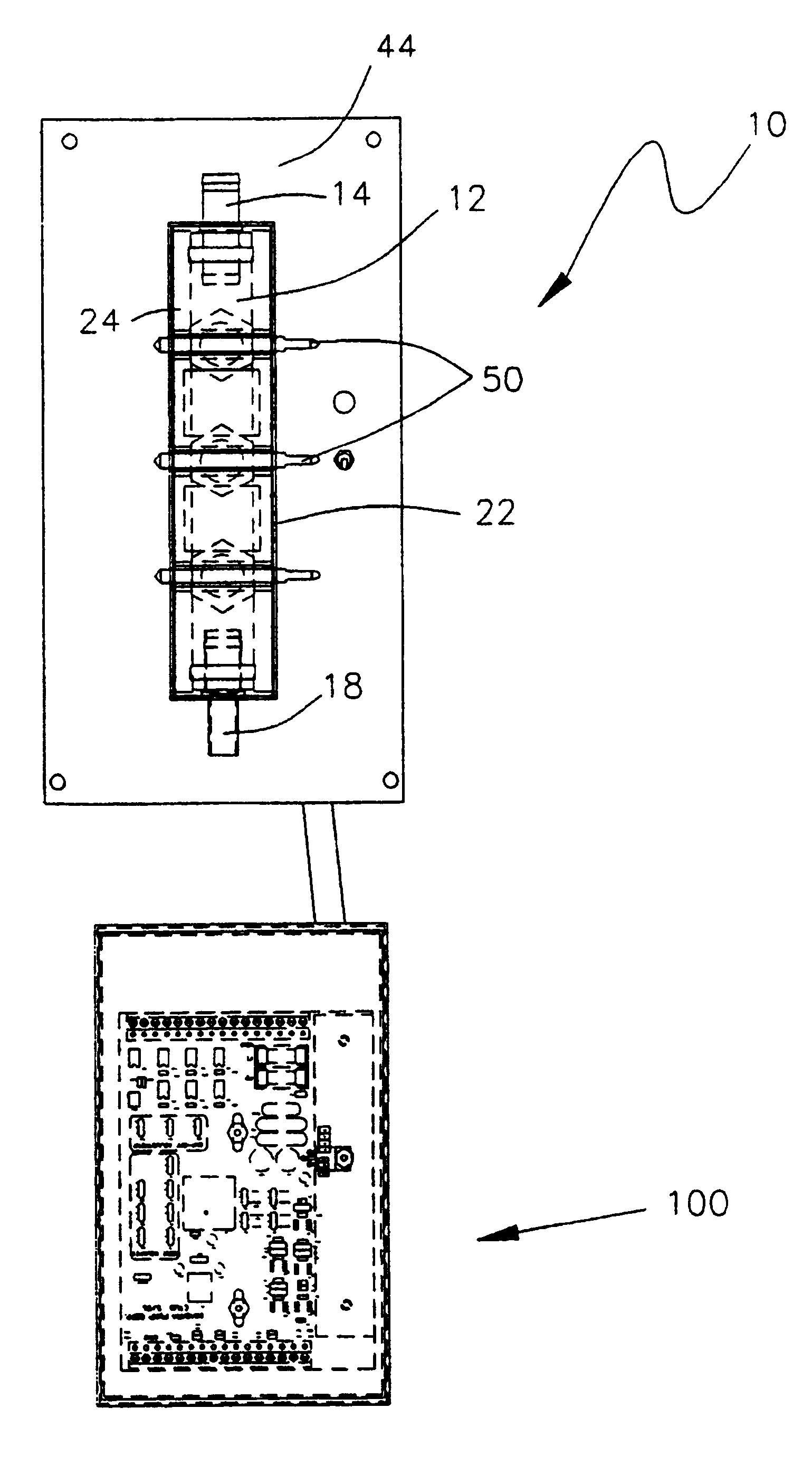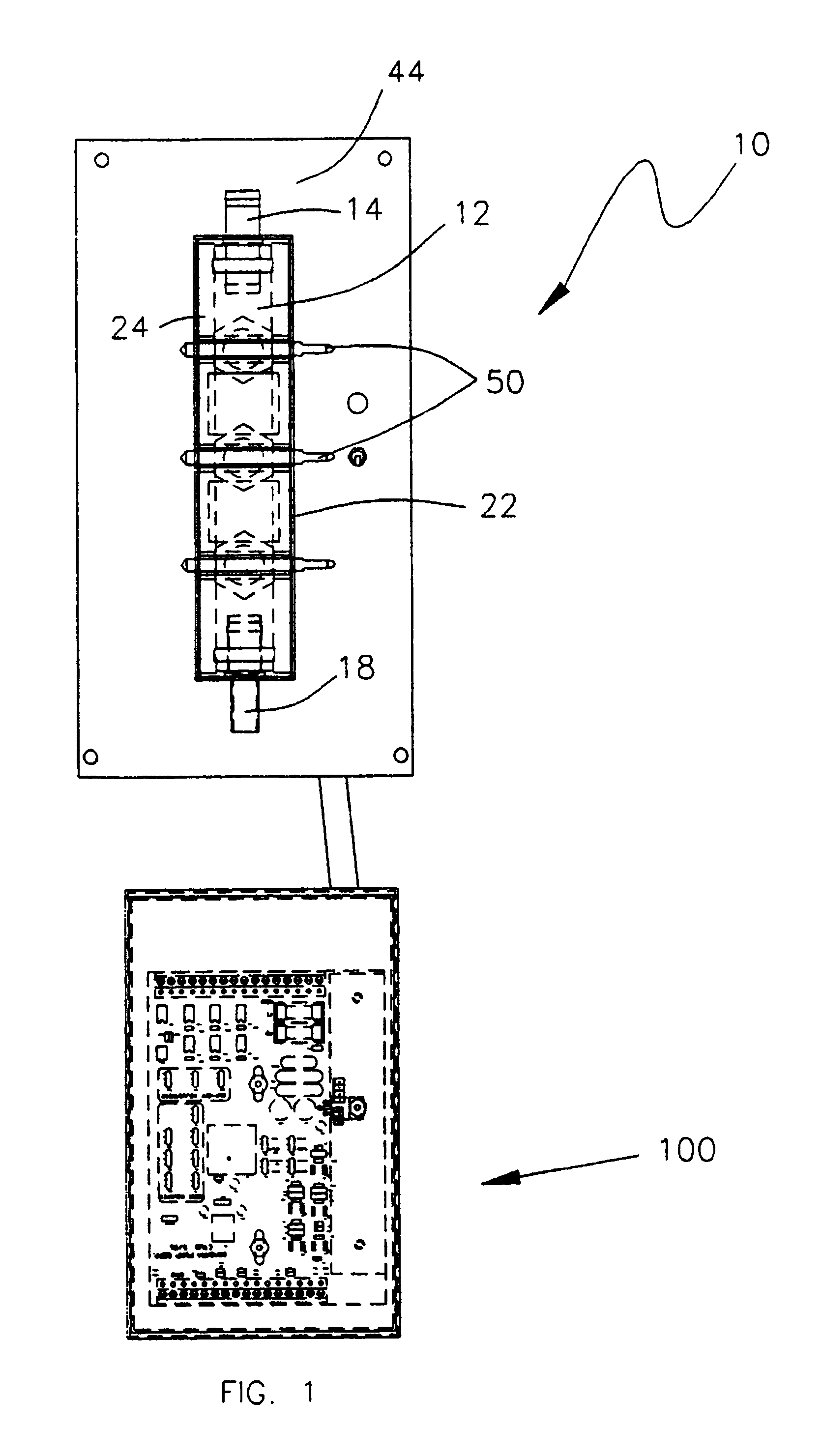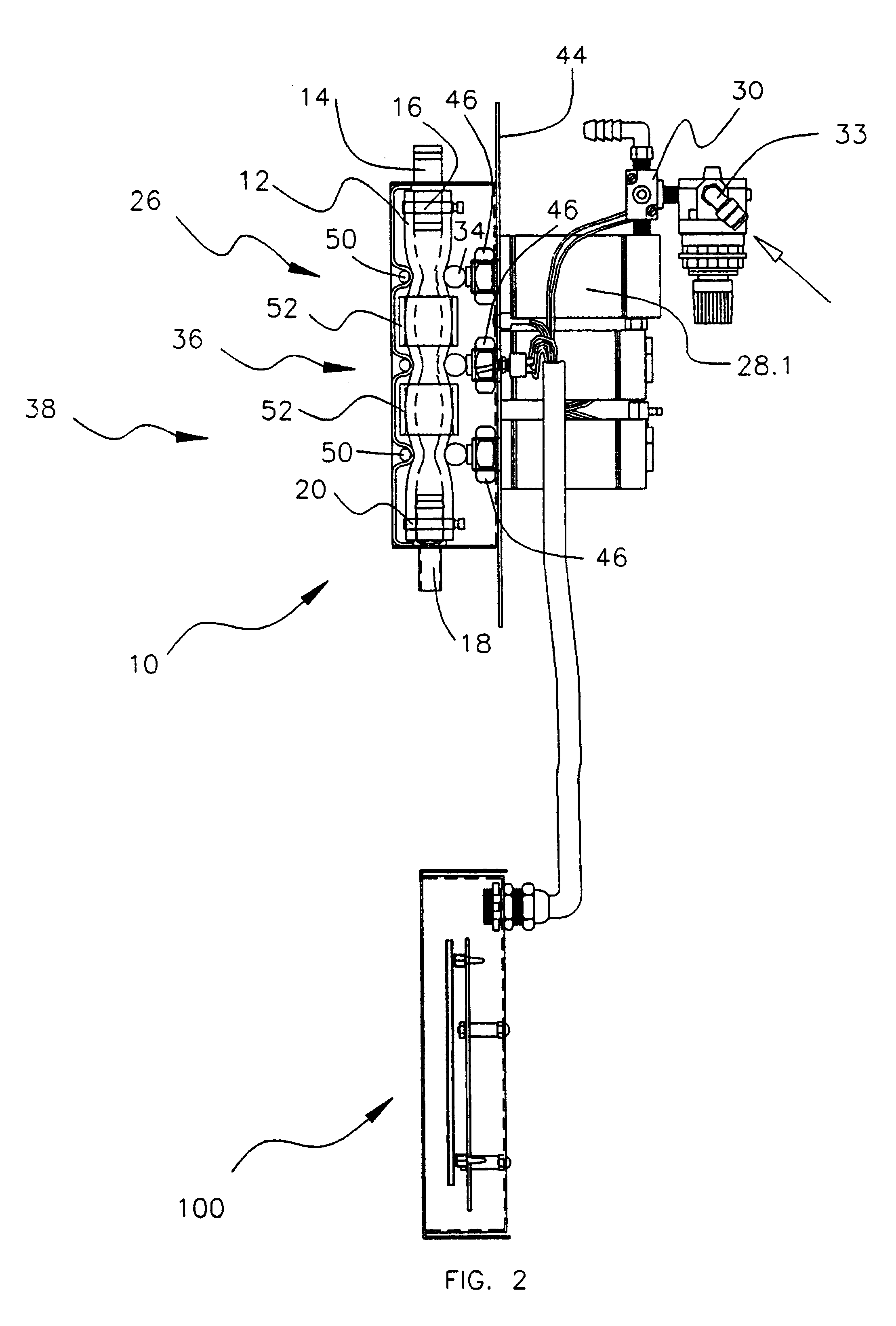Linear peristaltic pump
a peristaltic pump and peristaltic technology, applied in the direction of pump parameters, motor parameters, pump control, etc., can solve the problems of short tubing life, unstable and decreasing flow characteristics of the pump, and short tubing life, so as to prolong increase the flow range, and increase the useful pump tube life.
- Summary
- Abstract
- Description
- Claims
- Application Information
AI Technical Summary
Benefits of technology
Problems solved by technology
Method used
Image
Examples
first embodiment
The unique benefits of this method of construction of this first embodiment of the invention are several. First, when the top plate 24 is pushed down upon the pump hose 12, the hose is partially and symmetrically compressed between the anvils 34 and 24.1, as can best be seen from FIG. 5A. This firmly captures the tube 12 such that the ends are captured by the hose fittings, and intermediate portions of the tube at each matched and symmetrical anvil position. As will be shown, this partial symmetrical compression and highly defined capture of the tube at the points noted is critical to the beneficial operation of the present invention. Second, the means of attachment of the top plate also assures that the assembly is made to a precisely predetermined dimensional relationship relative to a particular size pump tube and a particularly sized embodiment of the pump. Third, the means of attachment also assures a very simple and self evident procedure for assembly and one which can be visu...
second embodiment
The second embodiment of the linear peristaltic pump apparatus of this invention, which is shown in FIGS. 32-35, uses check valves 212 and 216 instead of the occlusive valves of the first embodiment, and is modified in other ways. The second embodiment is more fully described in applicants copending U.S. provisional patent application Ser. No. 60 / 040,232, filed Mar. 11, 1997, the subject matter of which is incorporated herein by reference thereto. Briefly, the check valve pump apparatus consists of a suitable infeed check valve assembly 212 connected to one end of a short section of high durometer flexible tubing 214 of the same type employed above, with an outfeed check valve assembly 216 connected to the other end. The check valves, which allow fluid flow in only one direction, are fitted such that both allow flow in the same direction. Disposed between the two check valves is a pneumatically operated displacement assembly 218. Each of the valves 212 and 216 are essentially identi...
PUM
 Login to View More
Login to View More Abstract
Description
Claims
Application Information
 Login to View More
Login to View More - R&D
- Intellectual Property
- Life Sciences
- Materials
- Tech Scout
- Unparalleled Data Quality
- Higher Quality Content
- 60% Fewer Hallucinations
Browse by: Latest US Patents, China's latest patents, Technical Efficacy Thesaurus, Application Domain, Technology Topic, Popular Technical Reports.
© 2025 PatSnap. All rights reserved.Legal|Privacy policy|Modern Slavery Act Transparency Statement|Sitemap|About US| Contact US: help@patsnap.com



